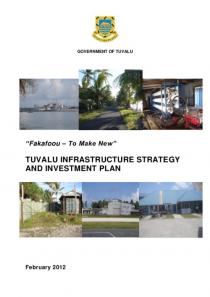This report was prepared by Andrew McIntyre, Brian Bell, and Solofa Uota as individual consultants under the guidance and with support of the Pacific Infrastructure Advisory Centre (PIAC) in Sydney, Australia. PIAC operates under the coordination of the Pacific Region Infrastructure Facility (PRIF), a partnership for improved infrastructure in the Pacific Region between the Asian Development Bank, the Australian Agency for International Development, the European Commission, the European Investment Bank, the New Zealand Ministry for Foreign Affairs and Trade, and the World Bank Group.
The views expressed in this report are those of the authors and do not necessarily reflect the views and policies of any of the PRIF Partners, the governments they represent, or their governing bodies. The PRIF Partners do not guarantee the accuracy of the data included in this publication and accept no responsibility for any consequence of their use.

